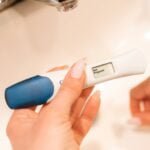Tests and procedures known as screening are used to identify diseases in persons who are asymptomatic.
Screening tests are intended to detect the disease early, before symptoms appear (like a lump in the breast that can be felt).
Early detection is important in cases where the disease can become lethal or untreatable over time. Secondly, screening is also important in cases where symptoms may not appear until the disease has progressed to a stage where it becomes incurable.
Breast cancer, like all other cancers, is detected early and can be totally curable. Breast cancer screening is recommended for all women and especially for women at high risk of developing breast cancer.
Breast cancer screening
Breast cancer screening is examining a woman’s breasts for cancer before any symptoms or indications of the disease become apparent.
The appropriate screening choices for each woman should be explained to them by their doctor. It is known as informed and shared decision-making when you are aware of the advantages and disadvantages of screening and decide whether and when to undergo it with your healthcare professional.
Breast cancer screening can help discover breast cancer early, when it is simpler to treat. Discuss with your doctor the best breast cancer screening procedures for you. And also the recommended timing for these procedures.
Breast cancers discovered during screening checks are more likely to be less advanced and smaller in size.
Some of the most crucial elements in determining a woman’s prognosis (outlook) for breast cancer are the size of the tumor and the extent of its dissemination.
What tests are used for breast cancer screening?
The following are the tests that may be used for breast cancer screening.
Mammogram
Mammography has been found to reduce breast cancer-related fatalities. This makes it the greatest tool available to clinicians for screening healthy individuals for illness.
Like every medical test, mammography carries some dangers. These include the potential for extra testing and worry if the test produces a mistakenly positive result or “false-positive” finding.
A “false-negative” result occurs when a mammogram fails to detect an existing malignancy up to 10% to 15% of the time.
Particularly in heavy breasts, digital mammography may be better equipped to detect breast cancers.
Tomosynthesis, often known as 3D mammography, is a more recent form of mammography. It could make it easier to detect the early stages of cancer and lessen the need for follow-up exams after false-positive results.
However, there is also a chance of discovering breast issues that would otherwise go unreported and have no detrimental effects. This is referred to as “overdiagnosis” and might result in harmful overtreatment.
Breast Magnetic Resonance Imaging (MRI)
A woman often lies face down on a table for a breast MRI while having her breasts positioned via apertures on the table.
The technologist observes the MRI through a window in order to assess breast placement. The window is also used to keep an eye out for any potential movement.
Typically, a vein in the arm must be injected with contrast material before or during a breast MRI. The dye could make pictures more distinct and make it simpler to spot anomalies.
Breast MRI has generally been unable to detect calcifications. These are actually microscopic calcium deposits that can be an early sign of breast cancer.
Breast Self-Examination:
Knowing how your breasts feel and appear can help you identify signs like lumps, discomfort, or size changes that may be concerning.
Changes discovered during a breast self-exam may be among them. Any changes you detect should be mentioned to your physician or other healthcare professional.
It has not been discovered that performing a breast self-exam or getting a clinical breast exam reduces the chance of dying from breast cancer.
Clinical Breast Exam:
Clinical breast exams are performed by medical professionals who use their hands to feel the breasts for lumps or other changes.
Breast screening recommendations
According to ACS. [Ref]
- It is optional for women aged 40 to 44 years to start breast cancer screening. Women at high risk of developing breast cancer can start breast cancer screening at the age of 30 years.
- Women aged 45 to 55 years should have a yearly mammogram done.
- Women 55 and older have the option of switching to a mammogram every other year or staying with annual exams. Screening can be continued if the woman is in good health and is expected to live ten years or beyond.
- When obtaining a mammogram for breast cancer screening, all women should be aware of what to anticipate and what tests can and cannot be performed.
Mammography is performed every two years for women. It is done between the ages of 50 and 74 who are at average risk of developing breast cancer.
For information on when to begin and how frequently to obtain a mammogram, women between the ages of 40 and 49 should speak with their doctor or other healthcare professional.
Women should consider the advantages and disadvantages of screening tests prior to actually deciding whether to start undergoing mammograms before the age of 50. [Ref]
Who is at a high risk of developing breast cancer?
It is important to know if you are your loved ones are at high risk of developing breast cancer or not. Identifying high-risk women necessitates early screening and advanced screening methods when a simple mammogram may not show any cancer.
Women at high risk of developing breast cancer are:
- Women with a cumulative risk of 20 – 25% of developing breast cancer. These include women who have a family history of breast cancer in the immediate (parents, children, or siblings) family members or in first-degree relatives (cousins and aunts).
- Women who are positive for high-risk mutations, especially BRCA1 and BRCA2 gene mutations, as detected on genetic testing.
- Women with known BRCA1 and BRCA2 gene mutations in immediate family members (parents, brother, sister, or child).
- Women with a history of radiation to the chest at the age of 10 to 30 years.
- Women with a personal or family history of Li-Fraumeni syndrome, Cowden syndrome, or Bannayan-Riley-Ruvalcaba syndrome.
Benefits of breast cancer screening
There are a great number of benefits, starting from the fact that early diagnosis will help with getting early treatment. This can ensure a person’s safety and longevity.
Risks of breast cancer screening
When a clinician observes anything that appears to be cancer but is not, it might result in harm such as false positive test findings. This may result in more testing, which can be costly, intrusive, time-consuming, and anxiety-inducing.
False negative test findings from mammograms. It can delay the detection of cancer and its treatment, and can also cause certain malignancies to be missed.
Tests can sometimes result in overdiagnosis when doctors identify cancer that could not have progressed to create symptoms or issues or even disappear on its own.
Overtreatment of these tumors is a term used to describe them. Treatments like radiation therapy or surgery that are advised for breast cancer might be overtreated.
These may have unintended and undesirable side effects. Radiation exposure from the mammography exam itself and discomfort experienced during treatments are two other possible side effects of breast cancer screening.
Even though mammography only exposes you to a small quantity of radiation, getting repeated X-rays might be dangerous.
- Premium Ingredients: Our tea blend features high-quality Berberine, aromatic Oolong, and refreshing Mint, all organicall…
- Mint Flavored: Enjoy the cool, crisp taste of mint that perfectly complements the robust flavors of Berberine and Oolong…
- Unsweetened with Zero Calories: Crafted for those who appreciate the natural flavors of tea, our blend is completely uns…
- Zipper Upgrade: Replaced with the well-known zipper brand, and added the zipper self-locking function to prevent the zip…
- Front zipper closure-Easy to put on and take off with zipper front closure. Anti slide Zipper protect from sliding down …
- Removable bra period pads-The inside of the cup has a small opening that contains a removable pad. Removable pads are ea…

- 【Post Mastectomy Bra & Daily Bra】:This bra Dual Purpose as Daily Bra.Bralette with 3-layer lining,padding or prosthetics…
- 【Adjustable buckle 、strap & Convertible bras】:Convertible bras,the shoulder strap back hook can be disassembled and adju…
- 【V-neck & Mesh lace design】:The V-neckline+Mesh LACE translucent design can fully cover but without losing sexy appeal,a…

- Redefinition light breast forms, zero pressure design bring you comfort and happiness
- Comfortable dehumidification, breathe freely, fitting and pragmatic.
- Soft and comfortable, newest design cotton eco-friendly, natural dirrerent breast forms shape to choose









